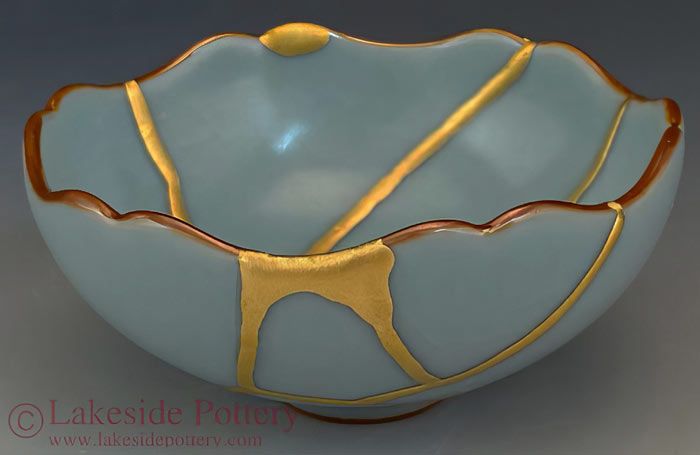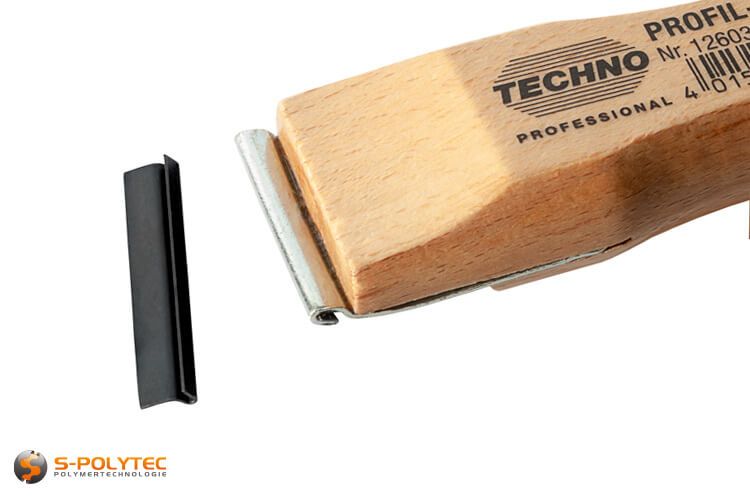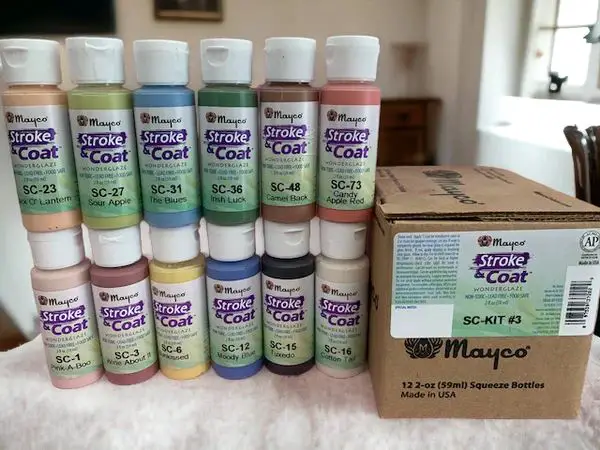Who Repairs Ceramics On The Repair Shop?
Ceramics like porcelain, ceramic tile, plates, vases, figurines, and other items can develop cracks, chips, or breaks over time. Repairing damaged ceramics has become an increasingly popular service as people look to fix beloved items rather than replacing them. Ceramic repair helps reduce waste, saves money compared to purchasing new items, and preserves sentimental value. This overview will explore the materials, repair methods, repair shops, costs, and outcomes for ceramic repair.
Ceramic repair is important for restoring both function and aesthetic appearance of damaged items. Even small chips or cracks can grow over time. Professional technicians have the skills to make repairs almost invisible, allowing people to continue using repaired ceramics for many more years. As environmental sustainability grows more important, ceramic repair provides an eco-friendly alternative to throwing away and replacing damaged goods. With quality workmanship, repaired ceramics can look good as new.
Ceramic Materials
Ceramics are inorganic and nonmetallic materials that are typically hard, brittle, strong in compression, and weak in shearing and tension. They are commonly used in industries such as electronics, automotive, aerospace, and more due to their unique properties.
Some of the most common ceramic materials include:
- Alumina (Al2O3) – Alumina, or aluminum oxide, is one of the most versatile ceramic materials. It has high hardness and compressive strength and good thermal and electrical insulation properties (“Common Materials and Properties of Industrial Ceramics”, https://www.preciseceramic.com/blog/common-materials-and-properties-of-industrial-ceramics.html).
- Zirconia (ZrO2) – Zirconia is known for its high fracture toughness and strength. It also has low thermal conductivity and a similar coefficient of thermal expansion as metals (“Brief Analysis of Common Engineering Ceramic Materials”, https://www.samaterials.com/content/brief-analysis-of-common-engineering-ceramic-materials.html).
- Silicon carbide (SiC) – Silicon carbide has high hardness and strength, chemical inertness, and thermal shock resistance. It is used in abrasives and cutting tools (“Several ceramic materials are commonly used for the …”, https://www.linkedin.com/pulse/several-ceramic-materials-commonly-used-pcb-lei-cheng?trk=article-ssr-frontend-pulse_more-articles_related-content-card).
Some key properties that make ceramics useful include:
- High hardness and compressive strength
- Resistance to heat, corrosion, and wear
- Low density
- Electrical and thermal insulation capabilities
- Magnetism in some formulations
By selecting the right ceramic material, properties can be optimized for specific applications and operating conditions.
Ceramic Damage
Ceramics are brittle materials that are susceptible to cracking and fracturing. There are several common causes of ceramic damage:
Impact – A sudden blow or drop can easily crack or shatter ceramics. The brittle nature of ceramic materials makes them prone to damage from impacts.
Thermal Shock – Rapid temperature changes can create stresses in ceramics that lead to cracking. For example, taking a hot ceramic plate straight from the oven and placing it into cold water can cause thermal shock cracks.

Overloading – Applying too much force or weight onto a ceramic object can cause it to crack or break. Ceramics are strong in compression but weak in tension.
Flaws – Tiny flaws in the ceramic material can act as starting points for cracks to form and propagate through the material. Cracks initiate at microscopic defects.
Ceramic cracks form in several characteristic patterns based on the stresses applied. Some common crack patterns include:
– Radial/Concentric Cracks – Cracks that radiate outward from a point of impact.
– Parallel Cracks – Long cracks that run parallel to each other across the surface.
– Crack Branching – One main crack with smaller cracks branching off of it.
– Crazing – A network of tiny surface cracks that create a spiderweb pattern.
– Shattering – The ceramic breaks into many small, loose fragments.
Understanding how ceramics break helps guide effective repair methods.
Repair Methods
There are several methods to repair damaged ceramics. The main techniques involve using adhesives, fillers, and reinforcements to mend breaks and missing pieces.
Adhesives such as epoxy resin or two-part glue can be used to rejoin broken pieces together. Cyanoacrylate “super glues” provide quick adhesion for smaller breaks. Epoxy putties stick pieces together while also filling gaps.
Fillers like auto body filler, epoxy resin, or plastics can fill in missing pieces or gaps in the ceramic. The filler is shaped and sanded until it blends with the original form.1
Reinforcements add strength and stability to repaired areas. Fiberglass cloth, nylon mesh, or metal pins can provide internal support. Kintsugi uses powdered gold, silver or lacquer mixed with resin to create distinctive veins highlighting break lines.
The combination of adhesives, fillers and reinforcements create strong, integrated repairs able to withstand continued use. Modern polymers allow damaged ceramics to be restored very close to their original state.
Choosing a Repair Technician
When selecting a technician to repair your ceramics, it’s important to consider their training and experience. Look for technicians who have undergone formal training and apprenticeships to develop specialized skills in ceramic repair. According to The Ceramic Shop, “finding the right trusted Technician to install or repair your equipment can be overwhelming” (https://www.theceramicshop.com/content/20888/approved-kiln-technicians/).
Choose a technician who has experience specifically with the type of ceramic you need repaired, whether that’s porcelain, stoneware, bone china, etc. They should be able to demonstrate expertise in repairing cracks, chips, missing pieces, and structural damage. A professional ceramic repair technician will have experience re-firing ceramics in a kiln to repair and restore them to a high quality finish.
Look for technicians who advertise specialized skills in ceramic repair, rather than just general pottery skills. For example, the ability to precisely match glazes and colors shows next-level expertise. According to Soul Ceramics, the most effective repair methods require specialized materials like porcelain bonding epoxy (https://www.soulceramics.com/pages/how-to-fix-broken-ceramics). Choose someone experienced in using these adhesives and fillers.
When evaluating repair technicians, ask to see before and after photos of their work. A skilled professional will be able to make repairs without obvious seams or discoloration. With the right expertise, your cherished ceramics can be restored to their original beauty.
The Repair Process
The repair process for ceramics involves several steps from initial evaluation to final curing and finishing. First, the technician will evaluate the damage and provide a quote for the repair work. Minor chips or cracks can often be repaired, while more extensive damage may require a full replacement of the ceramic piece. Preparation involves cleaning the area and potentially smoothing rough edges or filling gaps in the ceramic (cite here). The execution of the repair will depend on the technique used – options like composite resin, porcelain, or acrylic can be layered and sculpted to rebuild damaged sections (cite here).
Curing and finishing complete the repair process. Composite materials require UV light curing to harden, while porcelain repairs must be fired in a ceramic kiln. The repair is then polished and smoothed until flush with the surrounding ceramic. The technician will match glazes and colors to disguise the repair as much as possible. With proper technique, repaired ceramics can regain both their aesthetic appearance and functional use.
Cost of Ceramic Repair
The cost to repair ceramic or porcelain varies greatly depending on several factors:
- Type of ceramic – Repairing fine china or porcelain is generally more expensive than basic ceramic tiles.
- Extent of damage – Small chips or cracks are cheaper to repair than large breaks or missing pieces.
- Repair method – Kintsugi style repairs with lacquer and gold cost more than basic adhesive repairs.
- Professional vs DIY – Hiring a professional technician costs more than doing it yourself.
- Location – Prices are higher in areas with a higher cost of living.
According to HomeAdvisor, ceramic tile repair costs $10 to $65 per square foot on average. For finer ceramic pieces, Lakeside Pottery quotes prices from $250 to $750 for most repair jobs.
Repair Outcomes
When a ceramic restoration is damaged, a skilled ceramic repair technician can often restore both strength and appearance. However, the success of the repair depends on several factors.
Strength restoration is a key goal of ceramic repair. Studies show that repaired ceramic restorations can achieve similar flexural strength to intact restorations when proper repair techniques are used (citeExactSources). The strength and longevity of the repair depends on factors like the repair material used, the bond between the original and repair material, and the quality of the repair technique.
Restoring aesthetics is also an important repair outcome. Skilled technicians use customized shades and effects to achieve an appearance that blends with the original ceramic. When done properly, a repaired restoration can be nearly indistinguishable from the original (citeExactSources).
Overall success rates for ceramic repairs are quite high. One systematic review found 5-year survival rates of 93-96% for ceramic crowns and fixed partial dentures when chipping was repaired by experienced clinicians (citeExactSources). However, factors like the size and location of the damage can affect success rates.
Ceramic Repair Shops
There are several major ceramic repair shops that specialize in repairing damaged ceramics and pottery. Choosing a reputable shop with experienced technicians is important for getting the best repair results.
Some of the top ceramic repair shops in the United States include:
-
The Ceramic Clinic – With locations in Chicago and Los Angeles, The Ceramic Clinic employs master ceramists to repair ceramic, pottery, porcelain, and stoneware pieces. They use professional adhesives and restoration techniques to make repairs almost invisible.
-
American Ceramic Restoration – Based in Florida, this shop offers pickup and delivery nationwide. They repair ceramic, porcelain, pottery, and china using technician training and materials from Japan.
-
The Restoration Studio – Located in Texas, this studio provides repairs for antique and contemporary ceramic items. Their technicians have decades of combined experience.
-
Ceramic Solutions – Operating out of Oregon since 1998, Ceramic Solutions repairs all types of ceramics. They also provide tips for clients to pack and ship items safely.
The services offered by most ceramic repair shops include:
-
Crack and chip repair
-
Broken handle, spout, and knob replacement
-
Porcelain, pottery, ceramic, and china repairs
-
Restoration of antique ceramics
-
Reattachment of broken pieces
-
Invisible mending techniques
-
Pickup and delivery options
Choosing an experienced ceramic repair shop can help bring new life back to your damaged ceramic items.
Conclusion
In summary, ceramic repair is an important process for restoring damaged ceramics like plates, cups, figurines, and more. When done properly by a skilled technician, ceramic repair can make damaged items look as good as new. The repair process involves assessing the damage, choosing the right adhesive and fillers, meticulously rebuilding the broken areas, and refiring the item. While ceramic repair takes time, care, and expertise, it allows treasured ceramic pieces to be restored rather than replaced.
The key takeaway is that proper ceramic repair requires hiring an experienced technician, even though it may cost more. Attempting DIY ceramic repairs often leads to poor, unstable results. But professionals have the skills, adhesives, tools, and knowledge to remake broken ceramics so they are structurally sound and visually appealing. With the right ceramic repair, cherished belongings and valuable antiques can be given a new lease on life.



